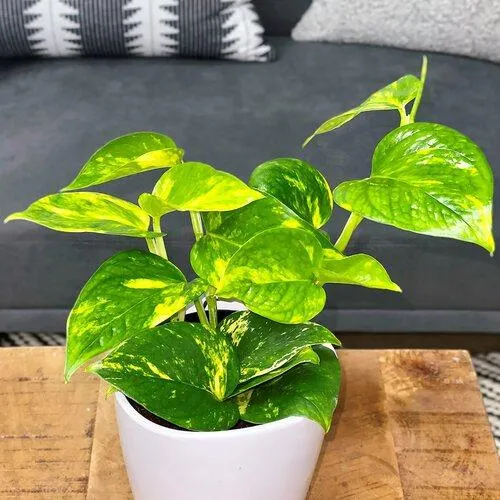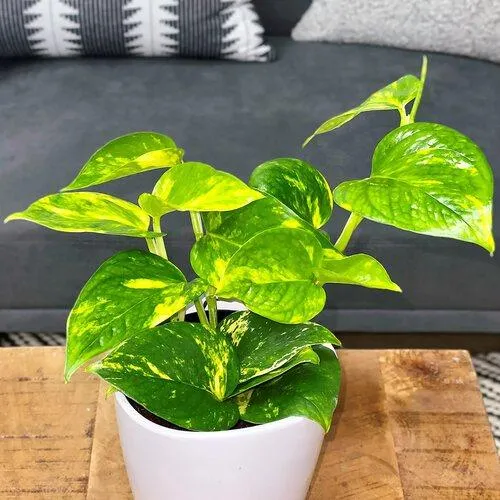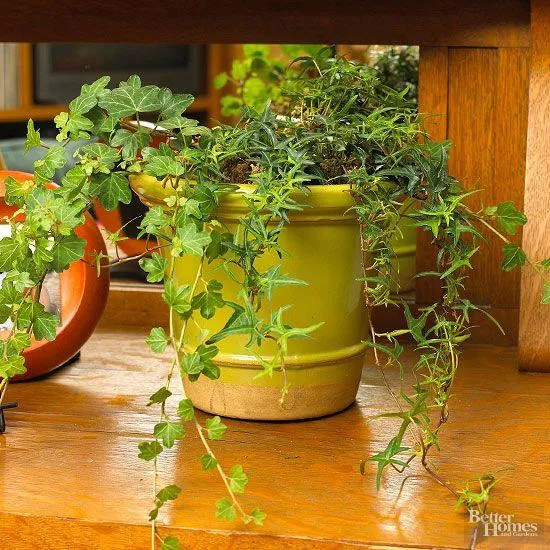All You Need to Know About Hanging Different Plants
If you’re searching for “different hanging plants”, you’re probably looking to add some greenery above your head. But with so many options, it can be tough to decide. In this article, I’ll cover the most popular hanging plant varieties and provide tips to help you choose types that suit your space and care level.
Common Hanging Plant Types
Here are some of the easiest and most versatile hanging plants to consider:
- Pothos. Known for being nearly impossible to kill, pothos vines thrive in low to medium light. Let them cascade down or keep them bushy by pruning. Great for beginners!
- English ivy. Similar care to pothos but slower growing. Train it on a trellis for a decorative vertical feature. Be wary of pets as some varieties may be toxic.
- Spider plants. Produce baby plantlets on short runners. Good air purifier that thrives in medium to bright light. Water when soil is dry.
- Philodendron. Comes in many varieties with heart-shaped, arrow-shaped or lance-like leaves. Tolerates low light and occasional neglect. Watch for spider mites.
- Swedish ivy. Forms lush, cascading vines with small, rounded leaves. Less tolerance for direct sun than English ivy. Will trail longer than other trailing plants.
Choosing the Right Plant for Your Space
When shopping for hanging plants, consider these key factors:
- Light levels. Does the spot get low, medium, or bright light? Match plants to conditions like office lighting versus a sunny kitchen window.
- Water needs. How often will you remember to water? Choose low-maintenance types if you’re forgetful. Refer to care tags for watering frequency.
- Size. Consider growth habits—trailing, bushy, or climbers. Fit plants to pot and hanging basket dimensions. Trim regularly for controlled sizes.
- Presentation. Select plants with foliage, flowers or forms that complement your style like heart-shaped, variegated or cascade styles.
- Pets & kids. Choose non-toxic types if hanging where small curious hands or mouths may reach. Research plant toxicity levels.
With some planning, you can pick low-maintenance, low-light tolerant trailing plants for busy areas or fancy foliage for feature spots. Scale plants to the space for a balanced look.
Caring for Hanging Baskets
Proper care keeps your hanging plants thriving. Here are some tips:
- Water thoroughly when topsoil is dry to the touch, then discard any excess water collected in the drainage saucer or pot. Overwatering causes root rot.
- Rotate the hanging basket weekly so all sides receive even sunlight exposure. This prevents lean growth and spotting.
- Fertilize every few weeks in spring and summer with a diluted, water-soluble plant food. Perfectly timed meals fuel healthy growth.
- Repot when roots begin to emerge through the drainage holes, usually after a year. Repotting refreshes soil and allows room for more root development.
- Prune leggy growth or untidy vines regularly to maintain shape and density. Snipping stimulates branching for fuller baskets.
Care routines may seem like work, but hanging baskets beautify spaces with minimal effort once established. Consistent watering is key to keep plants frolicking above your head rather than wilting.

Container Planting Tips
Selecting the right potting equipment makes all the difference. Here are some suggestions:
- Choose drainage holes. Water must escape to prevent root rot in soggy soil. Terra cotta is best but plastic is lightweight.
- Line the pot interior. Prevent soil leakage with a plastic pot liner, burlap or pebbles. They also allow moisture movement and aeration.
- Use a soil-less or premium potting mix, not garden soil which compacts. Look for mixes balancing moisture retention and drainage.
- Add gravel or charcoal to the pot bottom. It weights the pot, improves drainage and air circulation around roots.
- Secure trailing varieties with plant ties or clips on the pot rim so vines don’t slip through the drainage hole over time.
Proper planting prevents issues down the line. So do your research, choose quality gear and your hanging gardens will thrive with basic care.
Display Ideas To Consider
Get creative with hanging plant arrangements! Here are some inspiring setups:
- Above a dining table – Hang several matching planters of heartleaf philodendron for a lush, tropical feel.
- Along stairwell banisters – Alternate trailing ivy in hanging pots with upright spider plants for visual interest as you climb.
- Outdoor porch ceilings – Try stringing water-tolerant begonias, nasturtiums or ferns in matching macrame hangers for casual charm.
- Multi-level planters – Suspend a tiered, layered basket bursting with assorted foliage for a dramatic centerpiece.
- Green curtain – Grow long runners of english ivy, pothos or Swedish ivy from multiple pots to partially screen windows and walls.
With so many hanging plant options, you’re sure to find combinations enhancing any interior or exterior space. Have fun experimenting!
Common Problems and Solutions
No plant care is perfect, so issues may arise. Here are solutions if your hanging plants act out:
- Leaf drop or wilting – Overwatered, check drainage and reduce watering frequency.
- Brown spots or leaf curl – Under watered, increase water until soil is moist. Raise humidity with a pebble tray if very dry indoor conditions.
- Mealybugs or spider mites – Isolate plant and treat foliage bottom and top with insecticidal soap or a natural oil like neem oil. Repeated applications needed to fully eliminate pests.
- Yellowing lower leaves – Sign of over-fertilizing, flush soil well with plain water and reduce fertilizer doses.
- Leggy vines – Needs more light exposure or pruning to encourage bushier growth. Trim aerial roots for a tidier look.
With some basic plant detective work, you can identify and remedy common issues keeping your hanging gardens green and lush.

Frequently Asked Questions
Here are answers to other potential questions:
Can hanging plants withstand outdoor winter conditions?
Tender tropical varieties like pothos may struggle and should come indoors before first frost. Hardier ivies may survive outdoors year-round with protection from harsh winds and direct sun/rain in winter.
How often should I repot hanging baskets?
Typically every 1-2 years in spring as roots fill the container and soil breaks down. Repotting in larger pots encourages extra growth.
How do I revive a limp hanging plant?
Gently remove from pot,
Hanging Plants Comparison
| Plant | Light Needs | Watering | Care Level | Ideal Location |
|---|---|---|---|---|
| Pothos | Low to Medium | Allow soil to dry between waterings | Low | Kitchen, Bathroom |
| Philodendron | Medium | Water when top inch of soil is dry | Low | Living Room, Office |
| Spider Plant | Medium to Bright | Allow soil to dry out between waterings | Low | Bedroom, Living Room |
| English Ivy | Low to Medium | Water when top inch of soil feels dry | Low | Bathroom, Kitchen |
| Peperomia | Medium | Allow top inch of soil to dry out between waterings | Low | Office, Living Room |
FAQ
-
What types of hanging plants are there?
There are several different varieties of hanging plants. Some common ones are pothos, English ivy, philodendron, spider plants, and succulents.
-
How do I care for hanging plants?
To care for hanging plants properly you’ll basically want to water them regularly, but not overdo it. Give them sunlight or they might kind of wilt away. Fertilizing sometimes also keeps them lookin’ green and lush.

-
What is the best way to hang plants?
For hanging plants outdoors, you’ll need to use hooks or plant hangers that are sort of sturdy. Inside, macrame hangers or metal chains work well. But is a simple string safe? Perhaps test it before trusting your whole plant to it!
-
Do hanging plants need to be repotted?
Most hanging plants will need to be reported every few years, or when the roots start to poke out the drainage holes. It’s important to repot so the plant can continue to grow well. Some people wait too long and the roots get all twisted and crowded – yuck!
-
How long do hanging plants live?
It really depends on the type of plant. Some hanging plants like pothos and english ivy can live for many years, even decades, if cared for properly. More delicate plants may only last a season or two. With a little TLC most hanging plants can offer beauty for quite a while.
-
Can hanging baskets damage wood?
It’s possible for hanging baskets to damage wood if they’re allowed to sit in one spot too long. The moisture can cause rotting over the years. So to be safe, you may want to occasionally move hanging baskets to different locations on your deck or patio. Or consider using saucers underneath.
-
What is the best way to display hanging plants?
For an eye-catching display, try grouping various sizes and types of hanging plants together. You can also incorporate trailing vines with potted upright varieties. Make use of large and small macrame hangers or hooks at varying heights. Lighting them from below enhances their natural beauty too. With some creativity you’ll have a stunning garden in mid-air!
-
How do I protect hanging plants from animals?
Animals occasionally like to nibble on plants. For protection you could try spraying repellents or putting hot pepper wax around the edges of pots. Slapping on sticky traps near the base may catch critters. As a last resort, enclose plants in wire cages if animals just won’t leave them alone. Maybe try growing pet-safe plants instead?

